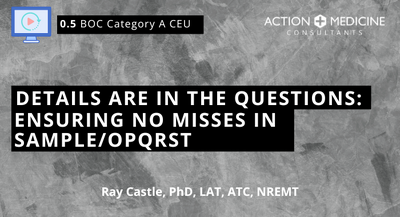General Course Information
Learning Material
28:16
AI Chat Bot
The chat bot may hallucinate. Please double check results.
Details Are In The Questions: Ensuring No Misses In The SAMPLE/OPQRST › Learning Material
Presentation (Video)
Updated Feb 21, 2024
Copyright © 2025 Action Medicine Consultants, LLC
___MESSAGE___
___MESSAGE___


